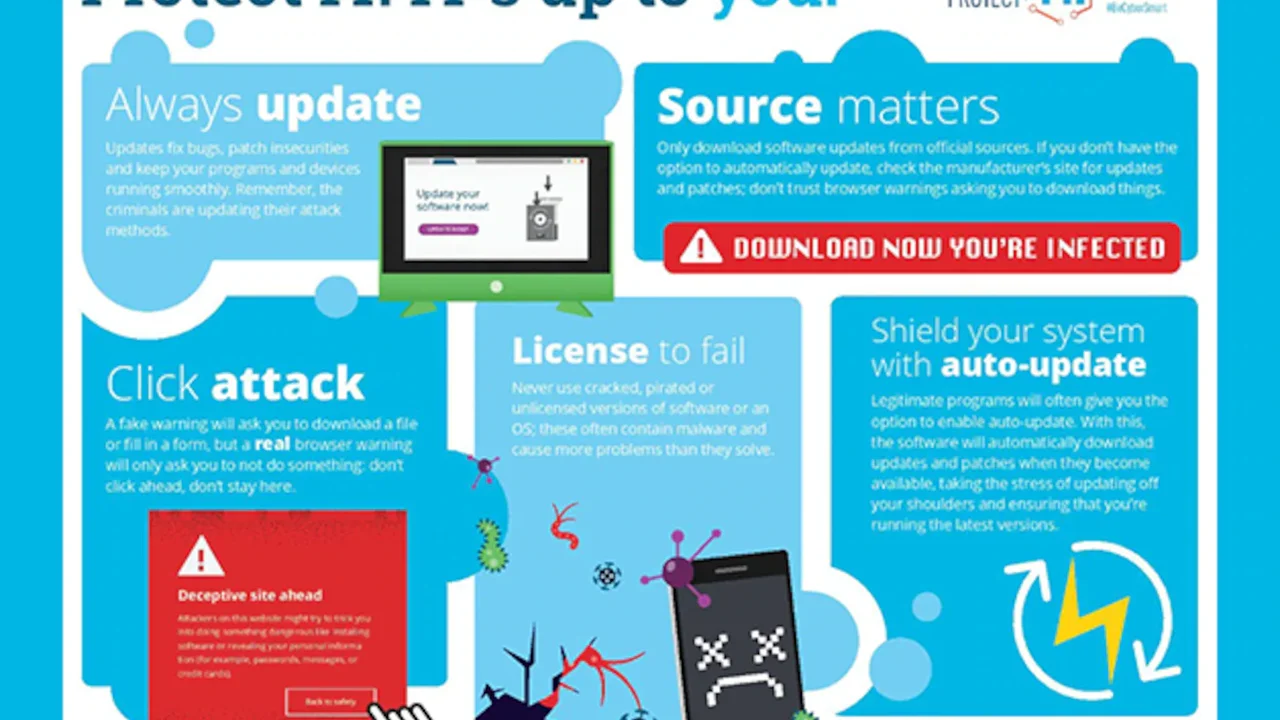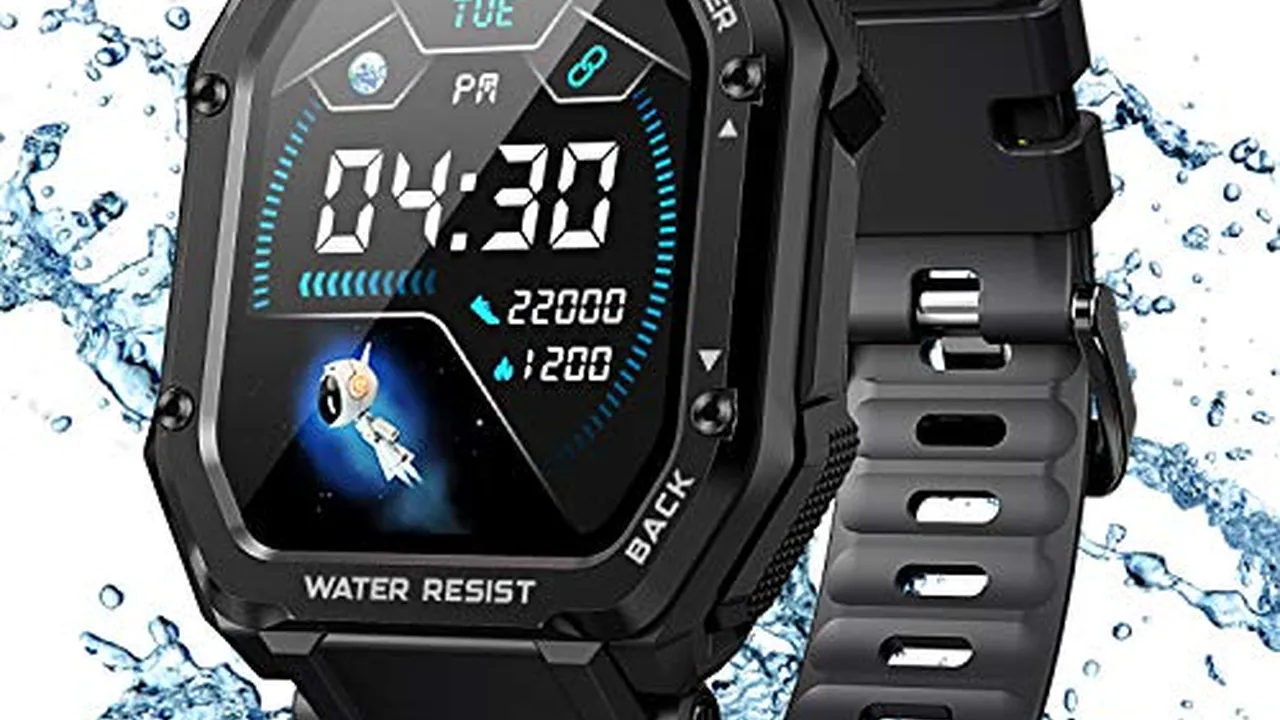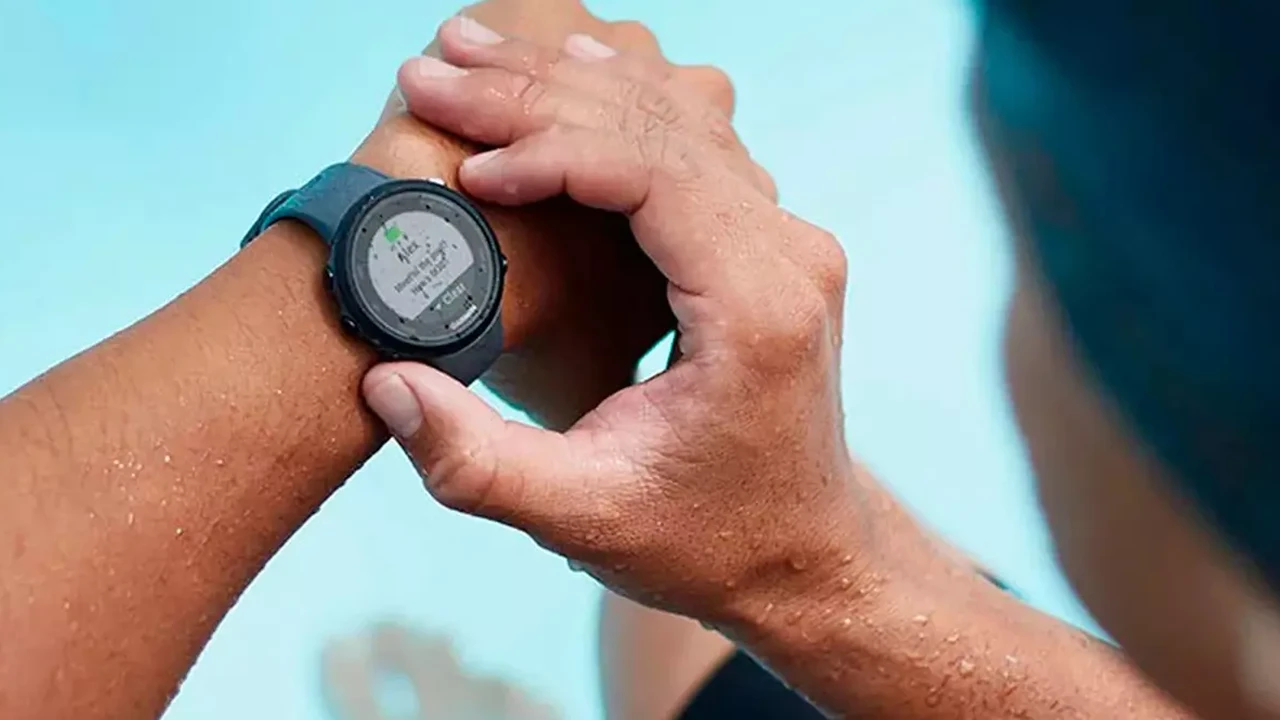Smartwatch Software Updates Why They Are Important
Learn the importance of regular smartwatch software updates for new features, bug fixes, and security enhancements.

Learn the importance of regular smartwatch software updates for new features, bug fixes, and security enhancements.
Smartwatch Software Updates Why They Are Important
The Crucial Role of Smartwatch Software Updates for Enhanced Performance and Security
Hey there, smartwatch enthusiasts! Ever wondered why your smartwatch keeps bugging you about those software updates? It’s not just to annoy you, I promise. These updates are super important for keeping your device running smoothly, adding cool new features, and, most importantly, keeping your data safe. Think of it like giving your smartwatch a fresh coat of paint, a tune-up, and a security upgrade all at once. Let's dive into why hitting that 'update' button is always a good idea.
Unlocking New Features and Capabilities with Smartwatch Updates
One of the most exciting reasons to update your smartwatch is to get access to brand-new features. Manufacturers are constantly innovating, and these innovations often come to your device through software updates. It’s like getting a new smartwatch without actually buying one!
Fitness Tracking Enhancements and Health Monitoring Innovations
For fitness buffs, updates often bring more accurate tracking algorithms, new workout modes, or even advanced health metrics. For example, a recent update might improve the accuracy of your heart rate sensor during high-intensity workouts or introduce new sleep stage tracking. Imagine your smartwatch suddenly being able to detect atrial fibrillation (AFib) or measure your blood oxygen levels (SpO2) more precisely – these are often rolled out via software updates. Garmin, for instance, frequently pushes updates that refine their GPS tracking for runners and cyclists, making your activity data even more reliable. Apple Watch updates have introduced features like ECG capabilities and fall detection, which were not present in earlier software versions but became available to existing hardware through updates.
User Interface Improvements and Customization Options
Updates can also completely refresh your smartwatch's user interface, making it more intuitive and visually appealing. You might get new watch faces, improved notification management, or easier navigation through menus. Samsung's One UI Watch updates, for example, often bring a more streamlined and customizable experience to their Galaxy Watch lineup, allowing users to personalize their device more deeply. This isn't just about aesthetics; a better UI can significantly improve your daily interaction with the device.
Enhanced Connectivity and Smart Home Integration
Smartwatches are becoming central hubs for our digital lives. Software updates can improve Bluetooth stability, Wi-Fi performance, and even introduce new ways to interact with your smart home devices. Imagine being able to control more smart lights or adjust your thermostat directly from your wrist, all thanks to a software update. Google's Wear OS updates often focus on improving connectivity with Android phones and integrating more seamlessly with Google Assistant and other smart home platforms.
Bug Fixes and Performance Optimizations for Smooth Operation
No software is perfect, and smartwatches are no exception. Bugs can cause crashes, slow performance, or even drain your battery faster than usual. Software updates are the developers' way of squashing these annoying bugs and making your device run like a dream.
Addressing Performance Lags and System Stability Issues
Ever noticed your smartwatch feeling a bit sluggish? Or maybe an app keeps crashing? Updates often include performance optimizations that make the operating system run more efficiently. This means faster app loading times, smoother animations, and a more responsive overall experience. Think of it as defragmenting your computer's hard drive – it just makes everything work better. For instance, early versions of some Wear OS watches sometimes suffered from noticeable lag, which subsequent updates largely resolved.
Resolving Battery Drain Problems and Improving Efficiency
Battery life is a huge concern for smartwatch users. Sometimes, a software bug can cause your battery to drain much faster than it should. Developers are constantly working to optimize power consumption, and these improvements are delivered through updates. So, if your smartwatch suddenly starts dying halfway through the day, a pending update might be the solution. Many users report significant battery life improvements after major OS updates on devices like the Fitbit Sense or Apple Watch.
Fixing Glitches and Inaccuracies in Sensor Readings
Your smartwatch relies on various sensors for health tracking, GPS, and more. Sometimes, these sensors might not be as accurate as they should be due to software glitches. Updates can calibrate these sensors, improving the accuracy of your step count, heart rate readings, or GPS tracking. This is particularly important for athletes and health-conscious individuals who rely on precise data.
Bolstering Smartwatch Security and Protecting Your Data
In an increasingly connected world, security is paramount. Your smartwatch handles a lot of personal data, from your health metrics to your location. Software updates are crucial for patching security vulnerabilities and protecting your privacy.
Patching Security Vulnerabilities and Preventing Data Breaches
Just like your smartphone or computer, smartwatches can have security flaws that hackers could exploit. Manufacturers regularly release security patches to close these loopholes, making it harder for malicious actors to access your personal information. Ignoring these updates leaves your data vulnerable. This is especially critical for smartwatches that handle payment information or sensitive health data.
Enhancing Privacy Controls and User Data Protection
Updates can also give you more control over your privacy settings, allowing you to decide what data your smartwatch collects and shares. This empowers you to manage your digital footprint more effectively. For example, an update might introduce more granular permissions for apps accessing your location or health data.
Protecting Against Malware and Unauthorized Access
While less common than on smartphones, smartwatches can still be susceptible to malware. Software updates often include improved defenses against such threats, ensuring your device remains secure from unauthorized access and malicious software.
Specific Product Recommendations and Their Update Benefits
Let's talk about some specific smartwatches and how their update policies benefit users. This isn't an exhaustive list, but it highlights how different brands approach updates.
Apple Watch Series 9
Price: Starting around $399 USD
Usage Scenario: Ideal for iPhone users who want seamless integration, advanced health tracking (ECG, SpO2, temperature sensing), robust fitness features, and excellent app support. Great for daily wear, workouts, and staying connected.
Update Benefits: Apple is renowned for its consistent and significant watchOS updates. These updates frequently introduce major new features (e.g., new watch faces, improved workout metrics, mental health tracking, double tap gesture), enhance existing functionalities, and provide critical security patches. For example, watchOS 10 brought a completely redesigned interface with widgets and new app layouts, breathing new life into older Apple Watch models. The longevity of support is also a huge plus; older models often receive updates for many years.
Comparison: Compared to Android smartwatches, the Apple Watch offers unparalleled integration with the Apple ecosystem. Its health features are often industry-leading, and the app store is vast. Updates are typically very stable and well-tested.
Samsung Galaxy Watch 6 Classic
Price: Starting around $399 USD
Usage Scenario: Best for Android users, especially Samsung phone owners, who appreciate a classic watch design with a physical rotating bezel. Offers comprehensive health and fitness tracking, Google services (Maps, Assistant, Wallet), and a vibrant display. Good for everyday use, fitness tracking, and smart home control.
Update Benefits: Samsung's Galaxy Watch line, running Wear OS Powered by Samsung (a collaboration with Google), receives regular One UI Watch updates. These updates often bring new watch faces, improved health algorithms (e.g., body composition analysis refinements), better battery optimization, and integration with new Google services. For instance, updates have improved sleep tracking accuracy and added new gesture controls. Security patches are also consistently rolled out.
Comparison: The Galaxy Watch 6 Classic stands out with its physical bezel and strong integration with Samsung Health. Its Wear OS foundation gives it access to a broader app ecosystem than some proprietary OS watches. Updates are generally reliable and add tangible improvements.
Garmin Forerunner 265
Price: Starting around $449 USD
Usage Scenario: Perfect for serious runners and multi-sport athletes who need highly accurate GPS, detailed performance metrics, long battery life, and robust training features. Less focused on smart features, more on athletic performance. Great for outdoor activities and intense training.
Update Benefits: Garmin is excellent at providing software updates that refine their sports tracking algorithms, add new sport profiles, improve GPS accuracy, and introduce new training metrics (e.g., training readiness, HRV status). These updates are crucial for athletes who rely on precise data for their training. They also frequently fix minor bugs and improve overall system stability. For example, an update might add support for new external sensors or improve the accuracy of pace tracking in challenging environments.
Comparison: Garmin's strength lies in its unparalleled sports and fitness tracking. While its smart features aren't as extensive as Apple or Samsung, its updates consistently enhance its core athletic capabilities. Battery life is also significantly better than most general-purpose smartwatches.
Fitbit Sense 2
Price: Starting around $299 USD
Usage Scenario: Ideal for individuals primarily focused on holistic health and wellness tracking, including stress management (cEDA sensor), sleep tracking, and heart health. Good for everyday wear and gentle fitness activities.
Update Benefits: Fitbit regularly pushes updates that refine their health tracking algorithms, improve sleep stage detection, enhance stress management features, and introduce new guided meditations or mindfulness exercises. They also focus on improving battery life and fixing any performance issues. Since Google acquired Fitbit, there's been a push to integrate more Google services, which often comes via software updates.
Comparison: The Fitbit Sense 2 excels in health tracking, particularly stress and sleep. Its updates are geared towards improving these core health insights. While it has some smart features, it's less of a full-fledged smartwatch compared to Apple or Samsung, but its health focus is strong.
Mobvoi TicWatch Pro 5
Price: Starting around $349 USD
Usage Scenario: A solid choice for Android users looking for a Wear OS watch with exceptional battery life, thanks to its unique dual-layer display. Offers good performance, access to Google services, and decent fitness tracking. Suitable for users who prioritize battery longevity.
Update Benefits: As a Wear OS device, the TicWatch Pro 5 benefits from Google's Wear OS updates, which bring new features, performance improvements, and security patches. Mobvoi also releases its own updates to optimize their proprietary dual-layer display technology and improve the integration of their Mobvoi Health app. These updates often focus on refining the power management and ensuring smooth operation of the Snapdragon W5+ Gen 1 chip.
Comparison: The TicWatch Pro 5's standout feature is its battery life, which is significantly better than many other Wear OS watches. Its updates often focus on maintaining this advantage while bringing the latest Wear OS features. It's a strong contender for those who want Wear OS but are tired of daily charging.
The Downside of Skipping Updates and Potential Risks
So, what happens if you just keep ignoring those update notifications? Well, it's not just about missing out on cool stuff; there are some real downsides too.
Security Vulnerabilities and Data Exposure
This is probably the biggest risk. Outdated software is like leaving your front door unlocked. Hackers are constantly looking for vulnerabilities, and if you're not updating, you're leaving yourself open to potential data breaches, malware, or unauthorized access to your personal information. Imagine your health data or payment information falling into the wrong hands – not a fun thought.
Performance Degradation and Compatibility Issues
Over time, without updates, your smartwatch might start to feel slower, apps might crash more often, and battery life could suffer. Furthermore, new apps or features might require the latest software version, meaning you won't be able to use them. Your smartwatch might also start having compatibility issues with your smartphone if one is updated and the other isn't, leading to frustrating disconnections or syncing problems.
Missing Out on New Features and Quality of Life Improvements
This one is less about risk and more about missing out. You simply won't get the latest and greatest features that manufacturers are rolling out. This means your smartwatch might feel outdated faster, and you won't be able to take advantage of improvements that could make your daily life easier or your fitness tracking more accurate.
Best Practices for Smartwatch Software Updates
Okay, so you're convinced updates are important. But how do you go about them the right way?
Enabling Automatic Updates for Convenience
Most smartwatches offer an option to enable automatic updates. This is usually the easiest way to ensure you're always running the latest software. Just make sure your watch is connected to Wi-Fi and has enough battery life (or is on its charger) when updates are scheduled.
Ensuring Sufficient Battery Life and Wi-Fi Connection
Before initiating a manual update, always make sure your smartwatch has at least 50% battery life, but ideally, it should be on its charger. Updates can be power-intensive, and you don't want your watch dying mid-update, which could potentially brick the device. Also, ensure a stable Wi-Fi connection, as updates can be large and consume a lot of data.
Backing Up Important Data Before Major Updates
While rare, sometimes an update can go wrong. It's always a good practice to back up any important data on your smartwatch before a major OS update. Most smartwatches sync data to your phone or a cloud service, but it's worth double-checking your settings to ensure your health data, settings, and other personal information are safe.
Checking for Update Release Notes and User Feedback
Before hitting 'install,' it's a good idea to quickly check the update's release notes. These notes will tell you what new features are included, what bugs have been fixed, and any known issues. You can often find these on the manufacturer's website or in the companion app. Sometimes, it's also wise to check online forums or communities for user feedback on a new update, just in case there are widespread issues that might make you want to wait a few days before updating.
The Bottom Line on Smartwatch Updates
So, there you have it. Smartwatch software updates are far more than just annoying notifications. They are essential for keeping your device secure, improving its performance, and unlocking new capabilities that enhance your overall experience. By staying on top of these updates, you're not just maintaining your device; you're ensuring it continues to evolve and serve you better every single day. So next time that update notification pops up, don't hesitate – hit that 'install' button and enjoy the improvements!
:max_bytes(150000):strip_icc()/277019-baked-pork-chops-with-cream-of-mushroom-soup-DDMFS-beauty-4x3-BG-7505-5762b731cf30447d9cbbbbbf387beafa.jpg)






